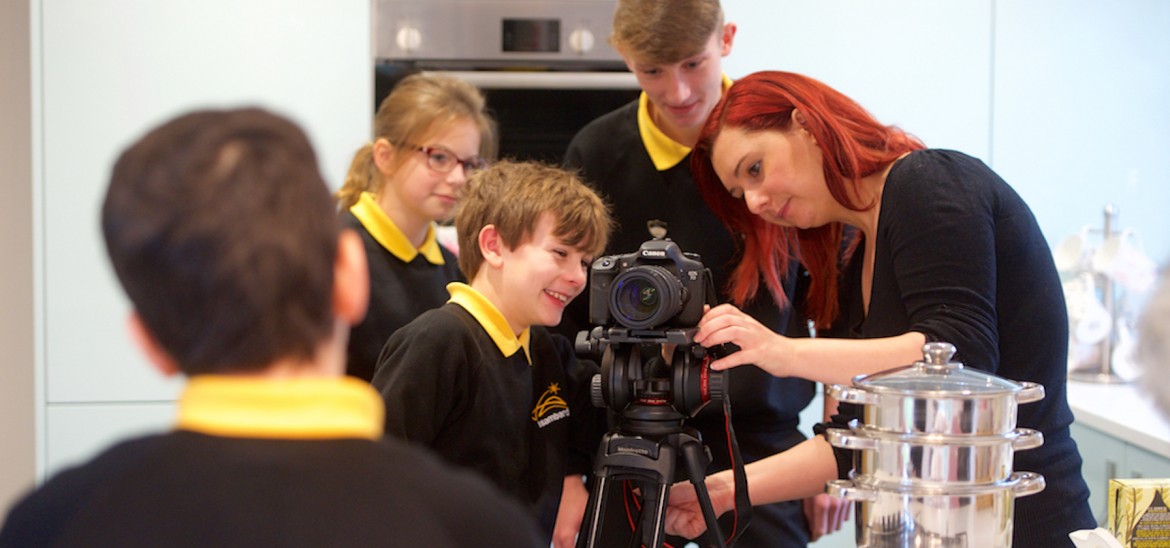Into Film Clubs
Find out everything you need to know about starting an Into Film Club.



Integrating filmmaking into the classroom can have a number of benefits for young people, and while it might sound complicated, it doesn't need to be a daunting task. Below, we talk to Tamla Bonnet, a film drama and dance practitioner who is also a qualified primary school teacher, who reveals why she is passionate about bringing creativity into the classroom, and offers her advice on how you can achieve the same.
I was lucky, as my PGCE included filmmaking and film watching, which meant I started using film during my final teaching practice. I used basic filmmaking and animation techniques as a form of assessment for Year 2s, as well as more advanced filmmaking techniques as a way to deliver information throughout modules for older children.
During my time in the classroom I saw how hesitant teachers were in using creativity and new technologies as a teaching aid, and knew I wanted to work with teachers to help develop their confidence. Over the last 7 years I have worked with many teachers, schools and students, teaching filmmaking in the classroom.
I also teach filmmaking in an extra-curricular setting for young people, as a way to extend their learning and develop soft skills.
Film is a great tool to use when looking at adaptation. Watch the film adaptation of something you are studying in literacy (for example, I've use the 'hide and seek' sequence in The Lion, the Witch and the Wardrobe), and compare it with the written section. How does it compare? Why has the director chosen the information they have? I have then asked children to do their own film adaptations of poems, which is a great way to get them thinking about what the important information is for a new audience.
The benefits of using filmmaking are huge, particularly when developing creativity in general, as well as soft skills, such as communication and teamwork. The different roles on a film set are great at targeting specific skills - so directing is brilliant for leadership and decision making, while operating the camera is great for developing listening skills.
I've also seen film have a big impact in raising literacy attainment, including improvements in writing and decoding skills due to a deeper understanding of narrative from having to think visually. Often children who have previously struggled in creative writing will fly when film is used as the starting point. It's amazing to see the boost in their confidence.
Filmmaking can seem a daunting task when you're getting started. The key thing to remember is that you don't have to make a whole film every time you use film in the classroom! You wouldn't get your kids to write a long story in every literacy class. Do short activities to help build basic understanding i.e. looking at shot types, or low-budget special effects, as well as using film as a tool to deliver modules.
Film is like literacy in many ways - you wouldn't teach writing without reading, so use film watching in tandem with filmmaking, as this will help extend your group's film vocabulary, and make them more adventurous when making their own films.
I believe a key principle when you start to teach filmmaking is intention. Young people nowadays are inundated with technology, and many will have used phones/tablets to film themselves or their friends in a social setting. Getting them to think about framing, and what information they want to share on the screen is the first step in getting them to think visually and become filmmakers.
Rotate roles during your filmmaking sessions, so that everyone gets the chance to experience the dizzying heights of being director, as well as the groundwork of being the runner. Every role on a film shoot requires different skills, so rotating means that every child receives a well-rounded experience and the chance to discover what they're good at.
Launching on 23 January 2017, we have a new free, three week online course that will help anyone working with young people aged 5-19 to engage them in learning through simple filmmaking and animation. You'll discover how film and animation can be used as powerful tools for encouraging active learning and enabling pupils to establish strong connections with any area of the curriculum.
Viewing 4 of 4 related items.

Find out more about our streaming service, designed specifically for UK schools.